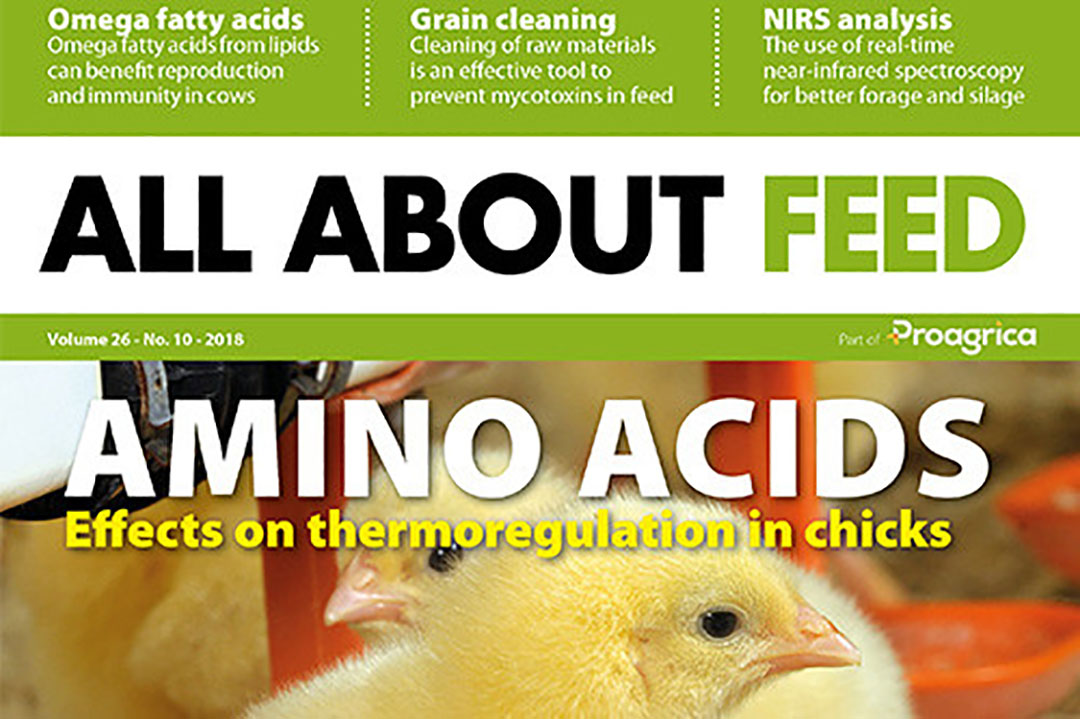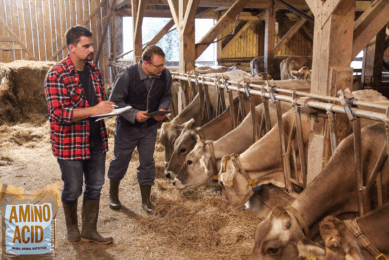December issue All About Feed now online

The latest edition of All About Feed (issue 10) can now be accessed and read in our digital magazine section. This issue we focus on in-ovo application of leucine, grain cleaning and omega fatty acids amongst others.
High ZEN and DON in the Middle East
Animal nutrition company Biomin is known for its annual comprehensive Mycotoxin Survey. Thousands of samples are tested throughout the year for the presence of the most important mycotoxins. The latest results are published in this issue of All About Feed and the results show a spike in mycotoxins in the Middle East and a slight improvement in Europe. With a risk level of 97% (extreme) and extreme high levels of ZEN (90%) and DON (97%) in Q3, the situtation in the Middle East can be considered worrying. The highest ppb level of DON found was 1490ppb (max threshold level is 150ppb). For FUM this was 2407ppb (max threshold level is 150ppb). More can be found on page 11.
Combatting heat stress with amino acids
In this issue we also take a look at novel ways to combat heat stress. Heat stress not only affects the livestock industry in tropical climates, it can also be a problem in temperate regions. The damaging effects of heat stress on broilers and laying hens for example are reduced growth rates, decreased egg production and poor meat and egg quality. Heat stress presents an increasing challenge for poultry production across the world since chickens are very sensitive to high ambient temperature (HT). HT causes their body temperature to increase and induces oxidative stress. In this article, on page 6, we delve into the application of leucine in-ovo and how this can help young chicks to better deal with heat stress.

Omega fatty acids for dairy cow rations
The aspects of omega fatty acids and the reproduction and immunity in dairy cows are quite well-known by nutritionists and do not constitute major concerns for them. On the contrary, lipids are nowadays not only perceived as providers of energy, but also functional components of diets with physiological and economic implications. Due to this, nutritionists have started to consider formulating for specific fatty acids and their ratios (similar to amino acids), as they have important implications in many aspects such as the overall digestibility of the diet, rumen health and feed efficiency, and others of increasing interest such as immunity and reproductive performance. There are, however, still no recommendations for fatty acids in dairy. Read more about this topic on page 8 of this issue.

Also featured in this issue:
- Red and green algae for animal diets
- Curcumin for sheep diets
- Effective grain cleaning
- Challenges for the insect meal sector
- NIRS to better measure nutrients in pasture
To read all the articles in this latest issue, go to the magazine overview page and sign up with your current website login.
The digital magazine can also be read in the app. Download the app in the iTunes store here or the Google Play store here.











